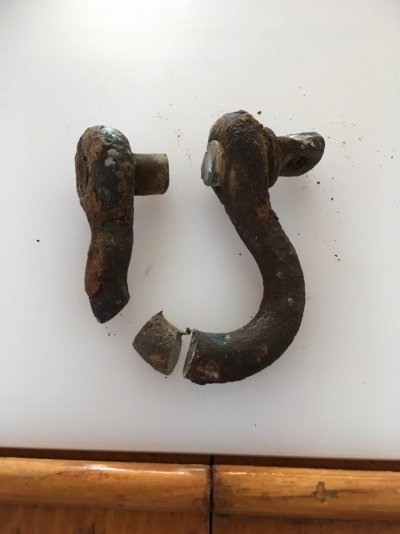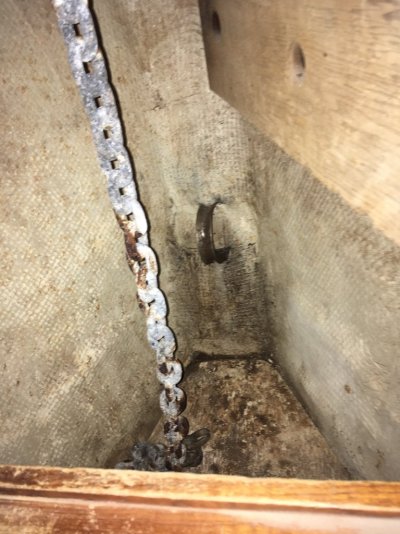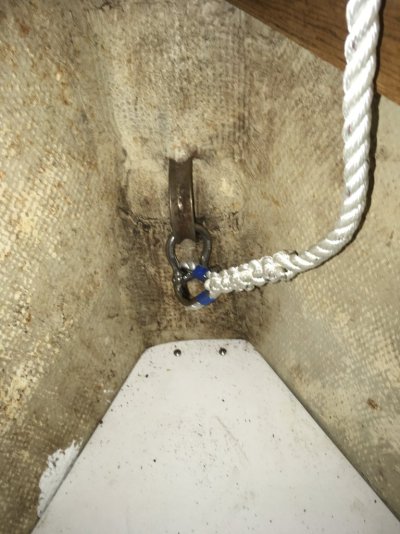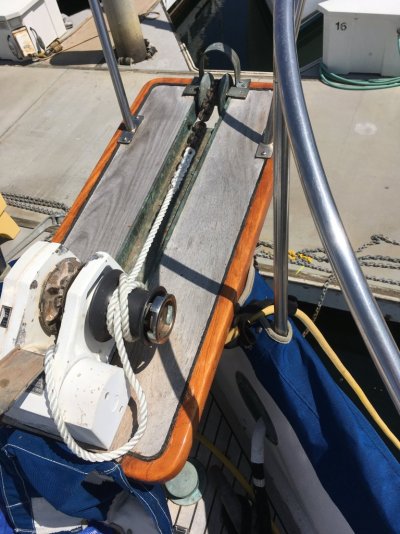In thousands of nights at anchor, I have had to "Cut and run" once. It is different than a "runaway" chain. The scenario was 35 ton displacement, pilot house ketch, 55' on deck. Anchored on a 70# CQR (Stb)and a 70# HT Danforth (Port) spread about 15*. Bottom was cobble stone rocks (roller bearings for anchors)--tested in reverse--but not as high RPM as I would have liked. Year 1984, so no GPS/plotter, fitted with Radar and depth sounder for rough position finding. Water depth where anchors were set was about 40' Bow 6' above the water, with 1/2" snubbers on each rode. Two stern lines; doubled 1/2" nylon to chains around rocks or a tree (with firehose over the chain). We were anchored in a protected anchorage on an Island off the coast of Yugoslavia; an area subject to the "Bora" a katabatibc wind similar to the "Santa Ana" winds in S. Calif. with which I was very familiar. Wife and two early teen age children aboard, all very experienced sailor. I had given each a sharp, robust knife to cut the lines. My situational awareness suggested that the conditions were very good for a Bora and gusts over 55 knots of wind. I had made an escape plan: Pre-planed compass bearings to get out of the harbor and put to sea if our anchorage/anchoring was threatened.
Anchor rode on CQR was 200 feet HT 3/8" chain with 400 feet of 7/8 inch 3 strand nylon rode for CQR; 50 feet of HT 3/8" and 400 feet of 7/8" nylon on Danforth. Both of these terminated with multiple passes of 5/16 nylon through an eye bolt placed through a 12" long piece of pine wood. Primary windlass was two speed Simpson/Lorance 24 volt, with Chain Gypsy and drum for starboard, drum only on port side--operated by foot switches on deck. Then going back over the secondary manual windlass which had both chain wheels, and drum on both sides. Two six feet long solid SS rod 3/4" levers powered this windlass. There was a Sampson post of 4 x 4 Oak, SS metal top, glassed all of the way down to the bottom of anchor locker. With fall into 5' deep anchor locker (divided into 2 compartments, with 3/4" plywood, encapsulated in glass. The deck hole was about 2" in diameter with caps, after rode secured. The multiple pass 5/16 bitter end securing lines reached to about a foot beyond the manual windlass.
Instructions to one person on each of two stern line, and one person on the bow, were to cut the mooring lines away upon the second gust of wind, veering of the bow more than 10 degrees or my command. The ninety Hp Ford Lehman started and in neutral. I was at the helm inside the pilot house, where I could view compass, radar screen, and wind speed. The gust was about 50 knots. I put the engine in gear, brought the RPM to high cruising speed and gave the "order to Cut". The stern lines cut like a rubber band. My wife on the bow, could not bring her self to cut the anchor lines (We had duplicates of the two bow anchors, and 25' of H T chain and shorter rode. The storm anchor was 150# 3 part fisherman, and, 50 feet of 1/2" HT chain, and 200 feet of 1" 3 strand nylon-not deployed. So she tried to pull in some of the Stb line. I finally convinced her to cut both lines, but the anchors had moved out of their verified (triangulated by radar) positions. She finally cut the bowers, and we ran to sea. After a few hours, the wind died down, and we returned to the harbor, rigged our second anchor set, and powered toward a very nice cay, with lots of riprap on the seaward side. We had not seen any boats tie up there. As we pulling along the inner finished side of the cay, the depth sounder showed decreasing depth. We re-anchored. The next morning we took the inflatable to the cay, and the depth sounder showed less than 5 feet. There had been no bottom dredging to allow the cay to be fully functional as a dock for larger. I put on SCUBA gear, and we used a "look box" To try and locate our anchor rodes. The Danforth was easy to find, because there was about 10' of white rode attached to the chain. The CQR rode was elusive. because there was only about 2 feet of the white nylon 3 strand rode. I made a grid and began systematically viewing the bottom from about 3 feet off--thus eventually found the second rode and anchor. Find out what works ahead of time. I would not put the eye bolt through the stem.
We would have been in very serious trouble (on the rocks) if we were not able to cut the bow anchors free. I re-spliced the rodes and all was good! This was a very sobering experience. Upon examination of the 1/2" 3 strand stern lines were heat fused on the inner surface of the 3 strands. Those lines went into the trash. Always plan ahead for various potential scenarios.




